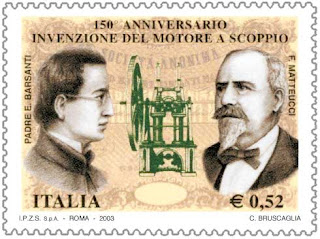Alesso Baldovinetti - painter
One of first to paint realistic landscapes
The early Renaissance painter Alesso Baldovinetti, whose great fresco of the Annunciation in the cloister of the Basilica of the Santissima Annunziata in Florence is still intact, was born on this day in 1425 in Florence. Baldovinetti was among a group described as scientific realists and naturalists in art which included Andrea del Castagno, Paolo Uccello and Domenico Veneziano. Influenced by Uccello’s use of visual perspective, he had a particular eye for detail and his views of the Arno river in his Nativity and Madonna are regarded as among Europe’s earliest paintings of accurately reproduced landscapes. Veneziano’s influence is reflected in the pervasive light of his earliest surviving works, and he was also greatly influenced by Fra' Angelico. Historians believe that in the 1460s Baldovinetti was the finest painter in Florence, although some argue that he did not fulfil all his initial promise. Born into the family of a wealthy Florentine merchant, Baldovinetti rejected the chance to follow his father’s trade in favour of art. In 1448, he became a member of the Accademia di San Luca in Rome. It is thought that he assisted with decorations in the church of Sant’ Egidio in Trastevere. Read more…
______________________________________
Alessandro Safina – singer
Tenor who has blended opera and rock
Alessandro Safina, a singer trained in opera who has expanded the so-called ‘crossover’ pop-opera genre to include rock influences, was born on this day in 1963 in Siena. A household name in Italy, the tenor is less well known outside his own country but has recorded duets with international stars such as Sarah Brightman, South Korean soprano Sumi Jo, Rod Stewart, former Pretenders singer Chrissie Hynde, Scottish actor and singer Ewan McGregor and the superstar Italian tenor Andrea Bocelli. Safina’s biggest album to date is Insieme a Te, which has sold more than 700,000 copies. It was written in collaboration with the Italian pianist and composer Romano Musumarra, who helped realise Safina’s ambition of creating soulful rock-inspired music for the tenor voice. He first performed songs from the album at the Olympia theatre in Paris in 1999. Safina was born into an opera-loving family and earned money to pay for singing lessons by working in his father’s stationery business. Set on becoming a professional singer from the age of nine, he began attending a music academy at 12 and was accepted for a place at the Luigi Cherubini Conservatory in Florence at 17. Read more…
_____________________________________
Palma Giovane - painter
Mannerist took the mantle of Tintoretto
The Venetian artist Jacopo Negretti, best known as Jacopo Palma il Giovane - Palma the Younger - or simply Palma Giovane, died in Venice on this day in 1628. Essentially a painter of the Italian Mannerist school, Palma Giovane's style evolved over time and after the death of Tintoretto in 1594 he became the most revered artist in Venice. He became in demand beyond Venice, too, particularly in Bergamo, the city in Lombardy that was a dominion of Venice, and in central Europe. He received many commissions in Bergamo and was often employed in Prague by the Habsburg Emperor, Rudolph II, who was a noted art connoisseur. Palma had been born into a family of painters. His great uncle, also called Jacopo, was the painter Palma Vecchio - Palma the Elder - while his father, Antonio Negretti, was a pupil of the elder Palma’s workshop manager, Bonifacio Veronese, whose shop and clientele he inherited after the latter’s death. The younger Palma is said to have developed his skills making copies in the style of Titian, although the claim in some biographies that he worked in Titian's workshop in Venice is now thought to be incorrect. Read more…
_____________________________________
Book of the Day: The Lives of the Artists, by Giorgio Vasari
Packed with facts, attributions, and entertaining anecdotes about his contemporaries, 16th century painter and architect Giorgio Vasari's collection of biographical accounts also presents a highly influential theory of the development of Renaissance art. Beginning with Cimabue and Giotto, who represent the infancy of art, in The Lives of the Most Excellent Painters, Sculptors, and Architects, to give the book its full, original title, Vasari considers the period of youthful vigour, shaped by Donatello, Brunelleschi, Ghiberti, and Masaccio, before discussing the mature period of perfection, dominated by the titanic figures of Leonardo, Raphael, and Michelangelo. This specially commissioned translation - by Peter Bondanella and Julia Conaway Bondanella - contains thirty-six of the most important lives as well as an introduction and explanatory notes.Giorgio Vasari was an Italian Renaissance painter in the Mannerist style and architect and sculptor of renown, whose works included the design for Tomb of Michelangelo in the Basilica of Santa Croce in Florence, the loggia of the Palazzo degli Uffizi and the so-called Vasari Corridor, which connects the Uffizi with the Palazzo Pitti on the other side of the Arno river.


.jpg)




%20(2).jpg)
.png)
.jpg)




_-_Facade.jpg)
.jpg)
.jpg)
.jpg)




.jpg)






.jpg)

.jpg)


